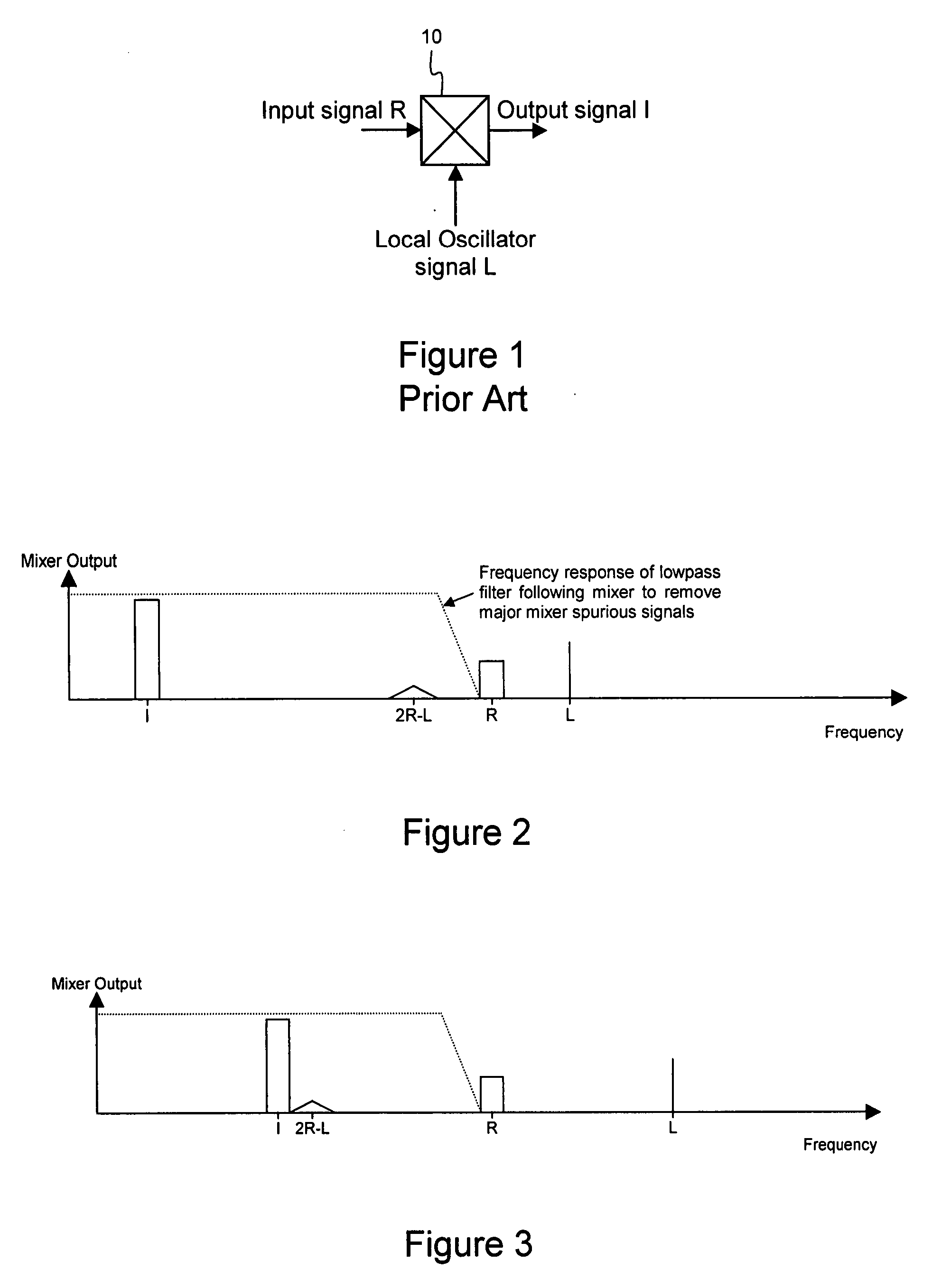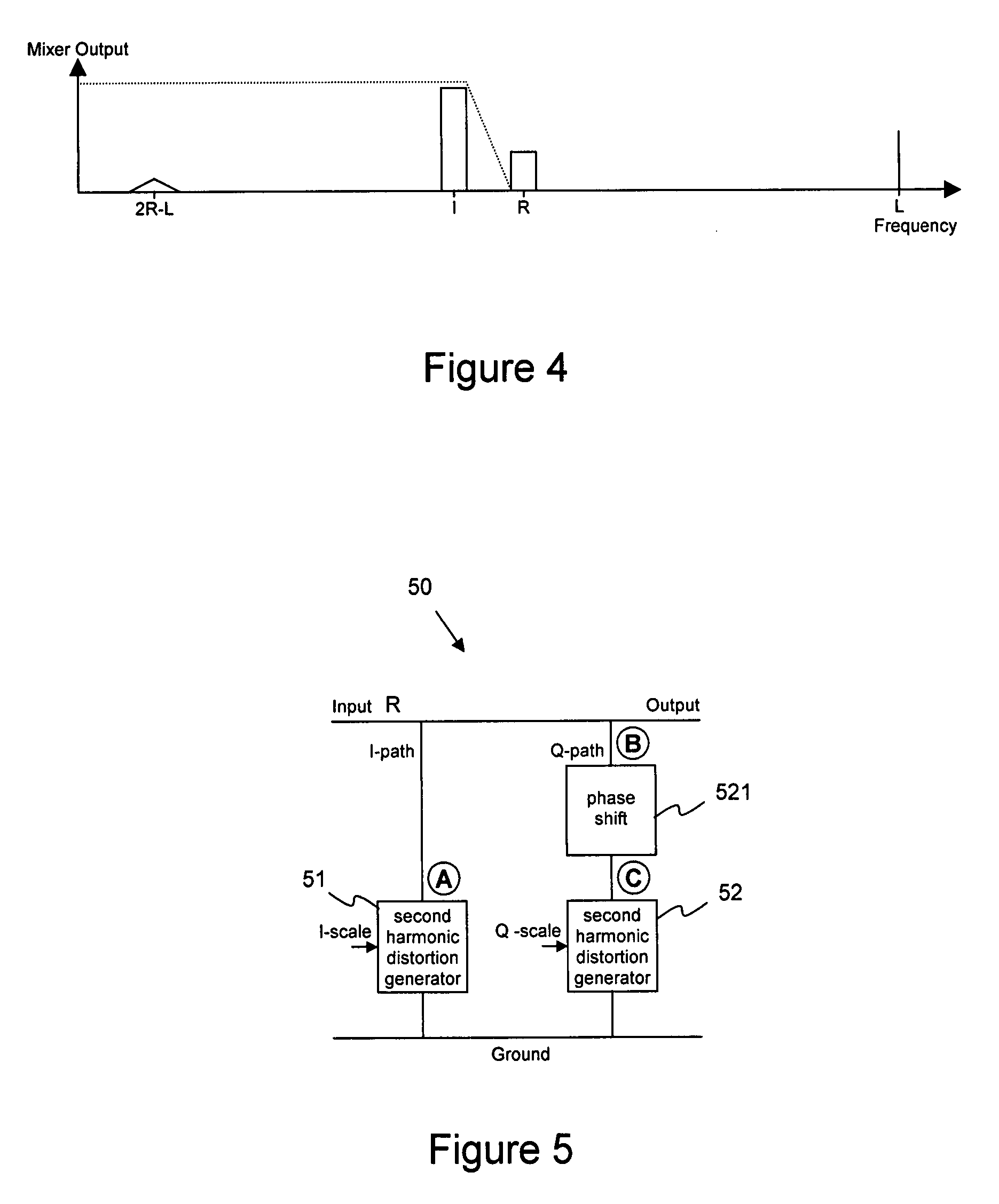Cancelling distortion
a technology of distortion and cancellation, applied in the field of cancellation of distortion, can solve the problems of complex required filtering process, inability to achieve the required degree of suppression, etc., to achieve the effect of maximising the cancellation of harmonic or intermodulation signals
- Summary
- Abstract
- Description
- Claims
- Application Information
AI Technical Summary
Benefits of technology
Problems solved by technology
Method used
Image
Examples
Embodiment Construction
[0053] Throughout the description, identical reference numerals are used to identify like parts.
[0054] Referring to FIG. 5, according to the invention there is provided a mixer pre-distortion stage 50 that does not use active amplifying components. The pre-distortion stage 50 comprises two distortion networks in parallel, a first distortion network 51 to produce in-phase (I) harmonic distortion from an input signal of frequency R and a second distortion network 52 to produce in-quadrature (Q) harmonic distortion from the input signal of frequency R. One of the paths, the Q path as illustrated in FIG. 5, although it can be either, includes a phase shifter 521 so that the in-quadrature version of the signal is phase shifted such that the phase of a resultant second harmonic signal of frequency 2R signal relative to the phase of the R signal at point B, at a signal input to the phase shift network 521, is 90° different from the phase of the 2R signal relative to the R signal at point ...
PUM
 Login to View More
Login to View More Abstract
Description
Claims
Application Information
 Login to View More
Login to View More - R&D
- Intellectual Property
- Life Sciences
- Materials
- Tech Scout
- Unparalleled Data Quality
- Higher Quality Content
- 60% Fewer Hallucinations
Browse by: Latest US Patents, China's latest patents, Technical Efficacy Thesaurus, Application Domain, Technology Topic, Popular Technical Reports.
© 2025 PatSnap. All rights reserved.Legal|Privacy policy|Modern Slavery Act Transparency Statement|Sitemap|About US| Contact US: help@patsnap.com



